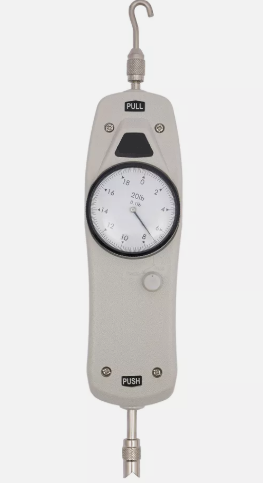
Navigating ADA bathroom requirements warrants a clear understanding of the dimensions and features that enable those in wheelchairs to use a bathroom with ease. From the public toilet space to the accessibility near a urinal, each aspect serves a vital function in creating a truly accommodating environment. Often overlooked details, such as the turning radius necessary for wheelchairs or the strategic placement of grab bars, can make or break the functionality of the space. In some cases, the consideration for wheelchair access may even extend beyond the bathroom, incorporating routes free from stairs or other mobility barriers. In this article, readers will unearth practical advice and innovative solutions that foster wheelchair maneuverability in restrooms.
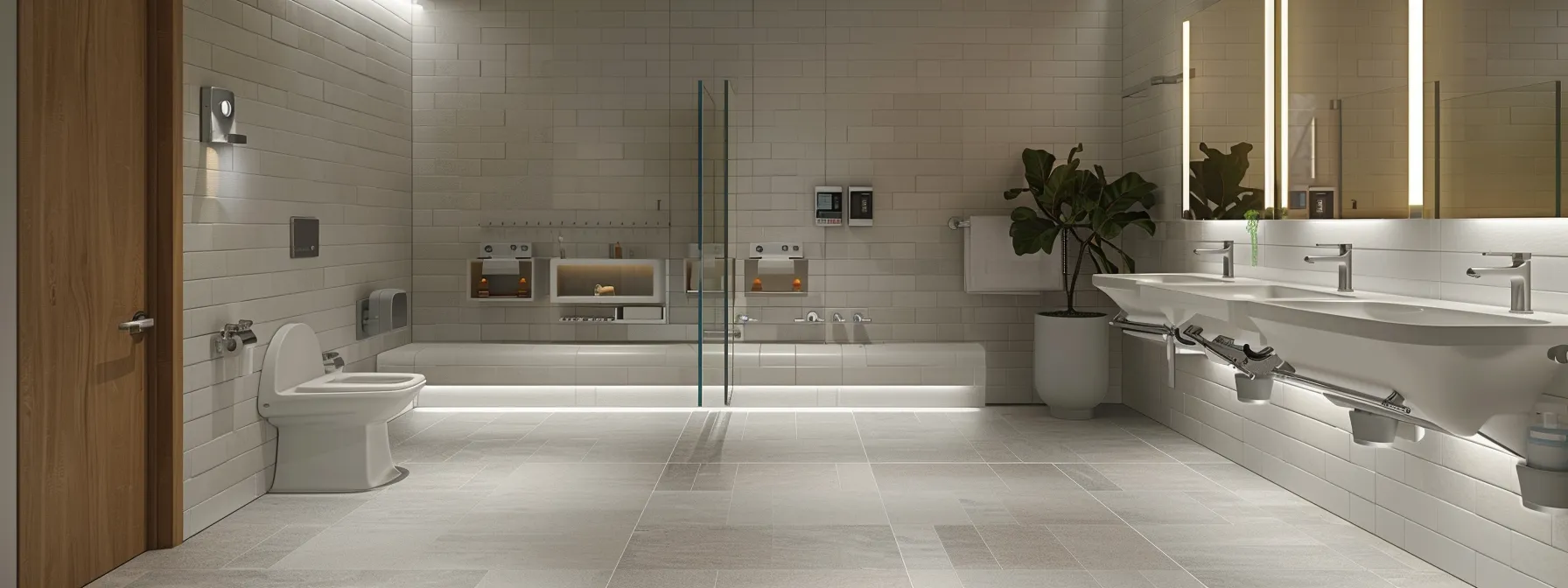
The Americans with Disabilities Act (ADA) sets forth rigorous standards to accommodate the needs of individuals who depend on wheelchairs for mobility. Specifically, ADA compliant bathrooms, according to ada bathroom requirements, are rigorously designed to ensure that ‘clear floor’ spaces meet precise specifications, enabling a turning diameter that allows for comfortable and safe navigation. These guidelines are established by the United States Access Board and focus intently on the minutiae that affect daily life, such as requiring ample space for a wheelchair to make a 180-degree turn. Similarly essential is the consideration of doorway width and entry design, eliminating barriers that can impede access. A meticulous assessment of these designs to ensure the correct space and ‘height’ parameters are vital for engendering an environment that upholds dignity and promotes autonomy in spaces where accessibility is not a luxury, but a necessity.
Proper dimensions in an ADA-compliant bathroom are critical, not unlike the careful planning one needs when organizing a bedroom for optimal movement and flow. Incorporating enough clearance space for a wheelchair to turn comfortably – akin to providing enough room to extend an arm fully while fishing – ensures safe and accessible restroom use for those with mobility disabilities. In environments where relaxation is key, as in a sauna, the design must include thoughtful details, such as lower sinks and mirrors, and accessible paths that avoid obstructing ‘toe clearance’ areas under fixtures.
In ADA compliant bathrooms, professionals must craft spaces with careful consideration given to the ‘clear floor space‘ surrounding fixtures like showers, ensuring no obstacle hinders a wheelchair user’s arm movement or the radius required for maneuvering. Sufficient floor space is fundamental to foster safe and independent login into a shower area, directly impacting the quality of life for individuals with a disability.
ADA requirements stipulate a minimum doorway width that ensures individuals using wheelchairs have unobstructed entry to bathroom facilities, leading directly to crucial amenities like showers and countertop areas. This necessitates strategic planning from the initial design phase to accommodate the broader dimensions of wheelchairs, preventing difficulties when navigating through entrances. Thus, the careful integration of these standards into building blueprints is imperative for creating a bathroom that truly meets the needs of all users.
Compliance standards set the stage for inclusivity, but the details bring those standards to life. Let’s zero in on the crucial design elements that enhance wheelchair maneuverability.
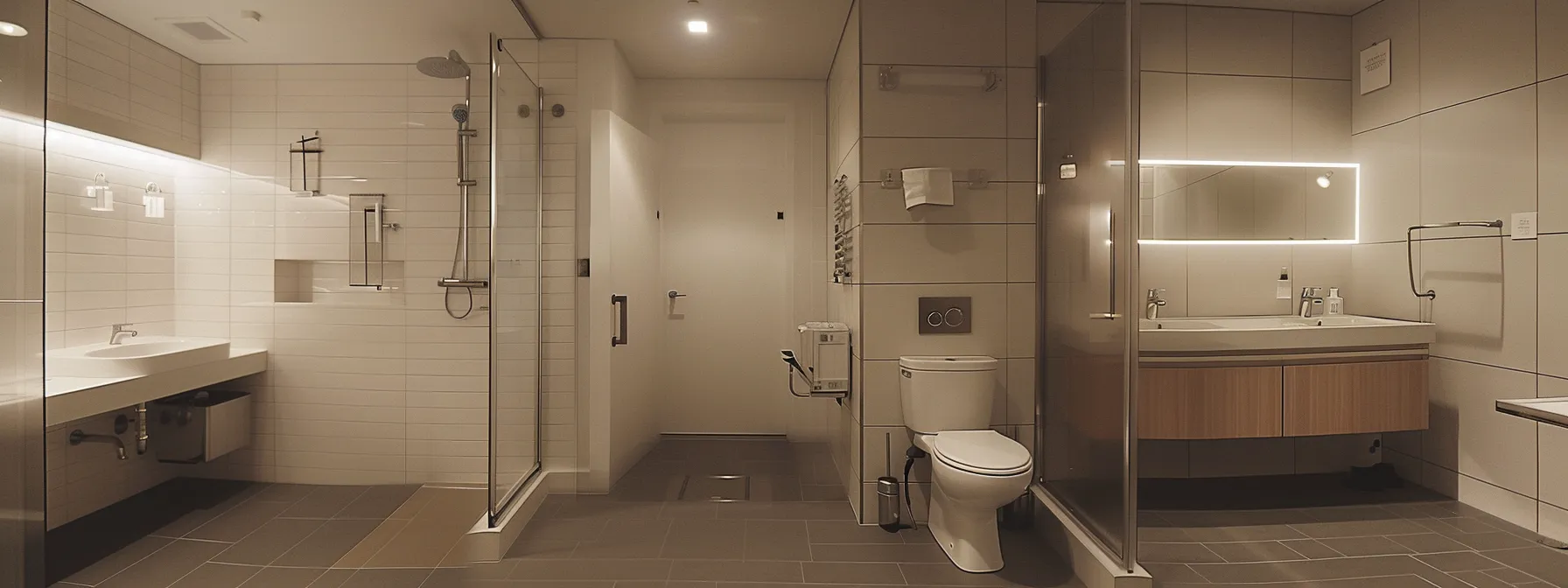
An ADA compliant bathroom must adhere to strict building codes, ensuring that the layout provides enough turning space for wheelchairs to move with ease. Optimal design accommodates the ideal turning radius, which is contingent upon both the arrangement of fixtures and the swing of the door. Inadequate consideration of these components can significantly impair access and maneuverability. The interplay between bathroom dimensions and the designated turning area directly informs user comfort and safety. Careful integration of ada standards in both lighting and structural design should be observed, as these elements enhance visibility and prevent obstructions, particularly around areas that require knee clearance. Ultimately, thorough planning is necessary to create an ada compliant bathroom that is both functional and compliant.
Adhering to the international building code, professionals must determine the appropriate turning space within bathroom layouts, ensuring that ada compliance is met for individuals with mobility limitations, including those with visual impairment. The bathroom design must accommodate an elevator-size space to allow a full 360-degree turn for a wheelchair, seamlessly integrating this feature alongside essential fixtures such as the sink to promote comprehensive accessibility.
| Feature | Requirement | Importance |
|---|---|---|
| Turning Space | Elevator-sized area for 360-degree turn | Facilitates safe and independent mobility |
| Visibility | Compliance with ada for visual impairment | Ensures equal accessibility for all users |
| Fixture Arrangement | Strategically placed sink and amenities | Maximizes use of space and functionality |
In the realm of accessibility, the construction of door swings merits careful attention, as it acutely influences the ease with which a wheelchair user enters and exits a bathroom. Doors must swing out from bathrooms to avoid reducing usable floor space, allowing for an adequate turning radius around crucial fixtures like toilets, where access to essentials like toilet paper must remain unimpeded. Meticulously crafted designs incorporate at least a 60-inch turning space to maintain a seamless flow within the restroom environment.
The meticulous application of standards set by the American National Standards Institute ensures that every inch of an ADA compliant bathroom contributes to the safety and comfort of the user. Generous aisle widths facilitate navigation, much like the planned spaces between counters in a functional kitchen, while advanced technology aids in creating intuitive environments that cater to the needs of wheelchair users.
Advancements in mobility don’t stop with smoother turns and glides. Now, let’s focus on how modern design is reshaping the accessibility of bathrooms for wheelchair users.
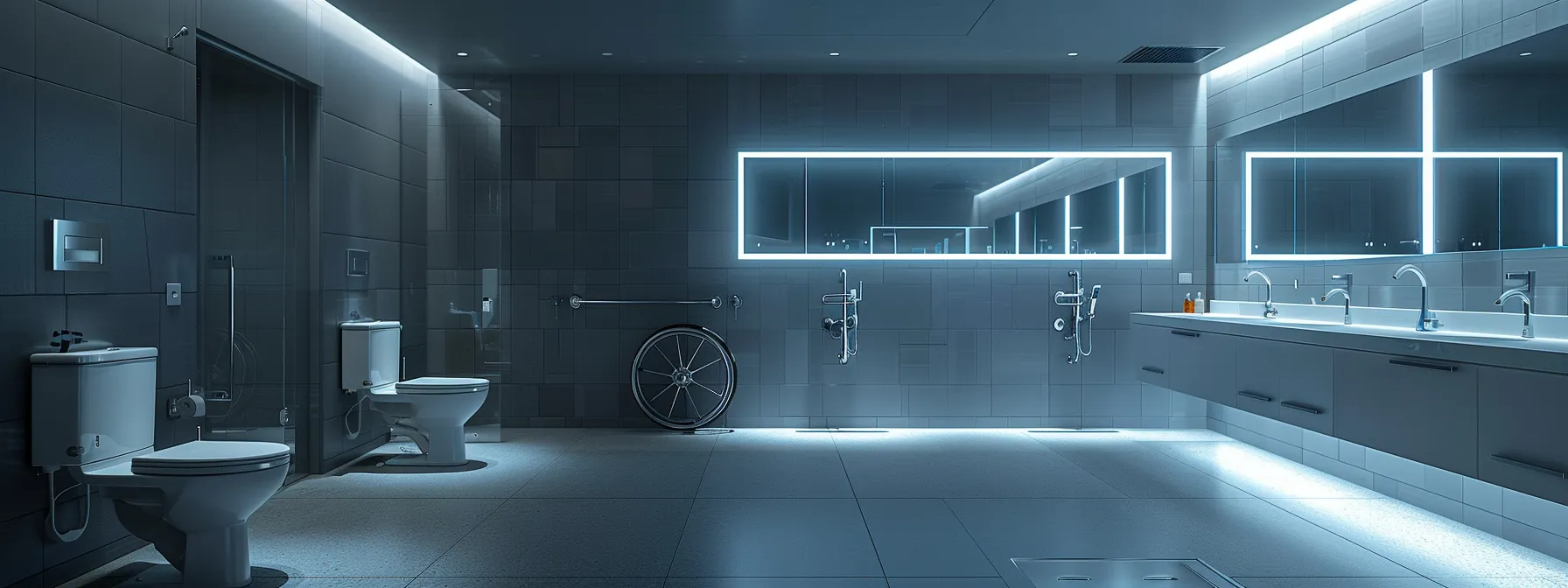
Advances in design and technology continue to enhance ada accessibility, offering sophisticated fixtures and smarter spatial arrangements for those who rely on wheelchairs. Compliant with strict ansi standards, modernized fixtures are reshaping what it means to accommodate mobility in confined spaces. Electric innovations now perform crucial adjustments in real-time, enabling optimized use of limited floor space. Simultaneously, creative custom solutions emerge to address the varying challenges presented by unique bathroom layouts, establishing rooms where accessibility goes hand-in-hand with elegance and practicality.
Recent enhancements in the design of toilets, toilet seats, and grab bars provide vital information to users while maximizing safety and comfort in ADA bathrooms. With the latest models offering adjustable heights and built-in supports, a toilet can now be tailored to individual needs. Grab bars are being integrated into wall designs in a manner that complements the aesthetic while maintaining their essential function.
In the pursuit of making restrooms more user-friendly for individuals with disabilities, businesses are turning to technology to overhaul the traditional accessible toilet experience. Automated features such as sensor-based latches and flushing mechanisms eradicate the need for manual handling, offering users a seamless and hygienic tip for engaging toilet facilities. Such innovations not only streamline the bathing process but also reinforce an establishment’s commitment to ensuring dignity and ease of access for all patrons.
Designers are increasingly deploying innovative plumbing techniques and mobility aid features to maximize available space within unique bathroom layouts. These tailored accommodations ensure that necessities such as paper dispensers remain within reach and that wheel-based devices can navigate with ease, enhancing the overall functionality of the restroom for wheelchair users.
Understanding the latest trends in wheelchair-friendly bathroom layouts is just the beginning. Now let’s move forward with concrete steps to enhance safety through the strategic placement of grab bars and other essential fixtures.

Ensuring that individuals who use wheelchairs, walkers, or scooters can safely navigate through a bathroom space hinges significantly on the strategic placement of grab bars and safety features. Properly installed grab bars provide essential support and improve balance for users as they transfer from a mobility aid onto a toilet or into a shower area, which often has a wet and slippery surface. When selecting grab bars, professionals must take into account the unique requirements of users, including the need for bars that accommodate the turning radius of various mobility devices. As standards evolve, particularly in states with rigorous codes such as California, designers are challenged to combine functionality with aesthetics, creating safety features that not only prevent accidents but also complement the bathroom‘s overall design. The integration of these elements must be carefully planned to accommodate the mat of a user’s choice, reinforcing stability and fostering confidence in the bathroom‘s usability.
The arrangement of grab bars in an ADA bathroom demands careful planning to address the Americans with Disabilities Act standards, ensuring that individuals who use wheelchairs have reliable support while transferring to and from the bathtub. Designers must consider not just the positioning but the space required for users to navigate effectively, guaranteeing that these safety features provide balance without impeding movement within the spatial design constraints prescribed by the ADA.
Selection of grab bars and supports in ADA compliant bathrooms hinges on a multifaceted criteria accommodating the diverse needs of individuals with disabilities. A thoughtful balance between the closet proximity and the restrooms‘ expanse must be maintained to provide sufficient support. The strategic placement of grab bars near the door and along the walls must adhere to ADA dimension guidelines, enabling a seamless transfer from a wheelchair to the toilet, akin to the ease of parking a car in a designated space, without undue strain or obstruction.
Within the framework of the Americans with Disabilities Act of 1990, the fusion of aesthetic appeal with functional design in safety features demands innovative approaches: Designers are tasked with creating grab bars, rails, and other supportive fixtures that not only comply with rigorous standards for comfort and stability but also blend seamlessly with the bathroom‘s overall decor. These enhancements should reinforce the ambiance of the space rather than detract from it, offering elegant yet practical solutions that aid in mobility while elevating the visual appeal of the environment.
Ensuring safety is a vital step; now let’s focus on empowerment through accessibility. We’ll take your showers and baths to the next level, making them wheelchair-friendly spaces that inspire independence and ease.
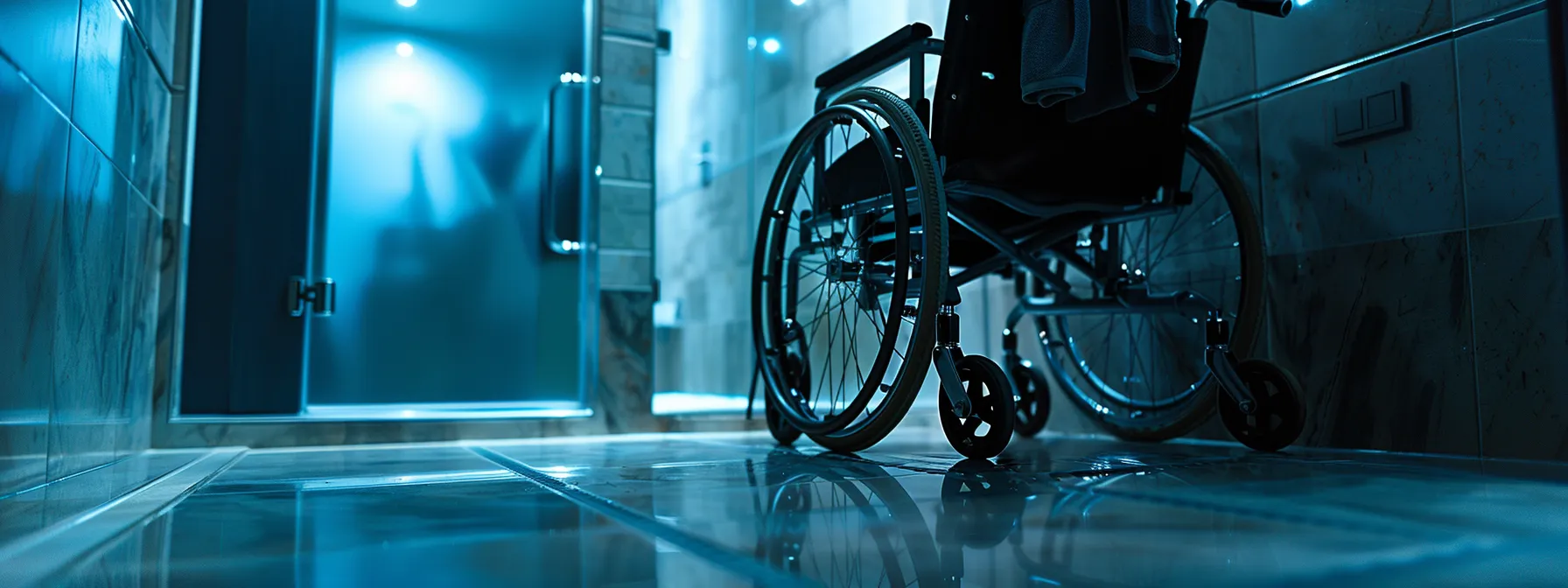
Adapting bathing areas to meet the needs of individuals who use wheelchairs necessitates a blend of thoughtful design and the selection of appropriate assistive devices. Creating accessible showers demands special attention to detail, ensuring the independence and safety of users by integrating features such as barrier-free entrances and strategically placed controls. Selecting the right shower seats and accessories further bridges the gap between functionality and comfort, aiding in the prevention of slips and falls. Meanwhile, altering traditional bathtub setups to include transfer benches or walk-in tubs transforms these conventional fixtures into safe, welcoming havens. These essential modifications not only adhere to compliance regulations but also enhance the daily living experience of wheelchair users, granting them the respect and convenience they deserve.
Designing showers that cater to wheelchair users requires an acute focus on creating unobstructed entries and spacious interiors. Shower controls and handheld sprayers should be within easy reach from a seated position, and slip-resistant flooring must be installed to reduce the risk of accidents, heightening the user’s confidence and autonomy during their daily routine.
When selecting shower seats and accessories for ADA compliant bathrooms, it is critical for designers to consider stability and ease of transfer. Seats should be firm, adjustable in height, and positioned to eliminate the need for unnecessary reaching, while accessories like shelves and handheld showerheads must be easily reachable to facilitate a safe and independent bathing experience for wheelchair users.
Adapting bathtubs to ensure accessibility for wheelchair users involves integrating solutions such as walk-in tubs or tubs with wide, outward-swinging doors to prevent mobility barriers. Additionally, installing anti-scald valves and placing controls within an arm‘s reach helps prevent accidents and fosters independence during bath time.
With your bathroom now primed for accessibility, the next step is selecting the right experts to materialize your vision. Professional resources and specialized ADA contractors are the key allies in transforming plans into reality.
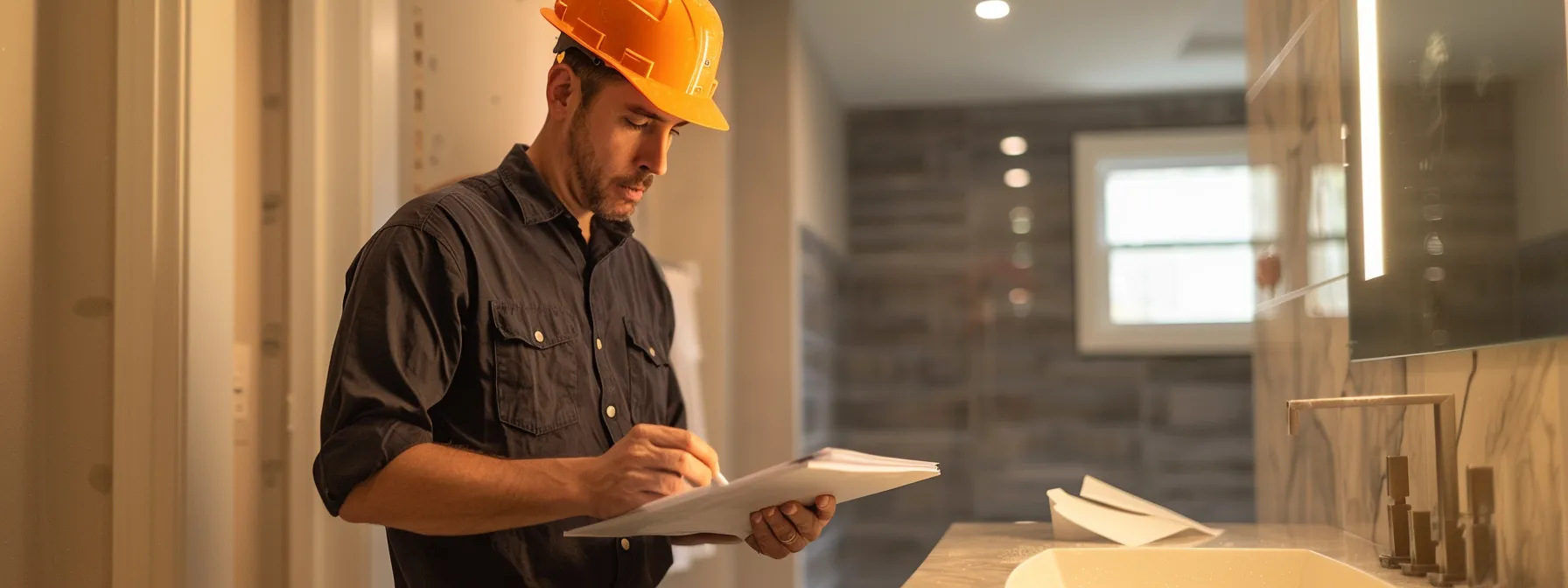
Securing a professional experienced in ADA compliance is vital for any bathroom renovation project aimed at enhancing accessibility. These experts not only bring in-depth knowledge of the relevant standards but also offer valuable insights into the most recent amendments that could impact design choices and functionality. Professionals well-versed in this specialized field can translate intricate regulations into actionable plans, adeptly maximizing the use of space while adhering to ADA guidelines. For architects, builders, and property owners, understanding the subtleties of ADA compliance—and applying them to the layout and features of a bathroom—safeguards the rights of individuals with disabilities to access safe, usable spaces.
When embarking on a bathroom modification for wheelchair accessibility, selecting a contractor with expertise in ADA compliance is paramount. A qualified contractor will possess not just the necessary knowledge of the standards but also an understanding of practical application, ensuring that the enhanced bathroom will meet the unique needs of individuals with disabilities. Experience, a proven track record, and the ability to provide tailored solutions are key indicators of a contractor who can execute a project that is both compliant and considerate of wheelchair maneuverability.
ADA standards are continuously refined to reflect the evolving understanding of accessibility needs, ensuring that bathroom designs incorporate elements that improve the day-to-day experiences of those with mobility impairments. Professionals must stay abreast of these updates, such as the latest requirements for barrier-free shower stalls and the positioning of handrails, which seek to enhance safety as well as independence for wheelchair users. A thorough knowledge of these changing guidelines is crucial for developing bathrooms that are not only compliant but also comfortably navigable.
Engaging professionals who specialize in ADA design offers invaluable perspective for optimizing space in bathrooms to accommodate wheelchairs effectively. These experts utilize their experience to create strategic plans that flawlessly integrate accessibility considerations within the existing architectural framework, ensuring every square foot is tailored to provide freedom of movement and ease of use for wheelchair users.
Optimizing wheelchair maneuverability in ADA compliant bathrooms ensures safe and independent access for individuals with mobility disabilities. Strategic design, including adequate turning radius and barrier-free access, is critical to accommodate the specific needs of wheelchair users. Compliance with ADA guidelines not only fosters dignity and autonomy but also enhances the overall functionality of the bathroom environment. Through careful planning and professional expertise, bathrooms can be transformed into accessible spaces that prioritize user comfort and safety.



Measuring door pressure is acting in compliance with building regulations, like the Americans with Disabilities Act (ADA). It’s an important step in ensuring accessibility, safety

When talking about building safety, the first things that come to mind are fire alarms, emergency exits and security systems. Meanwhile, the one tool that